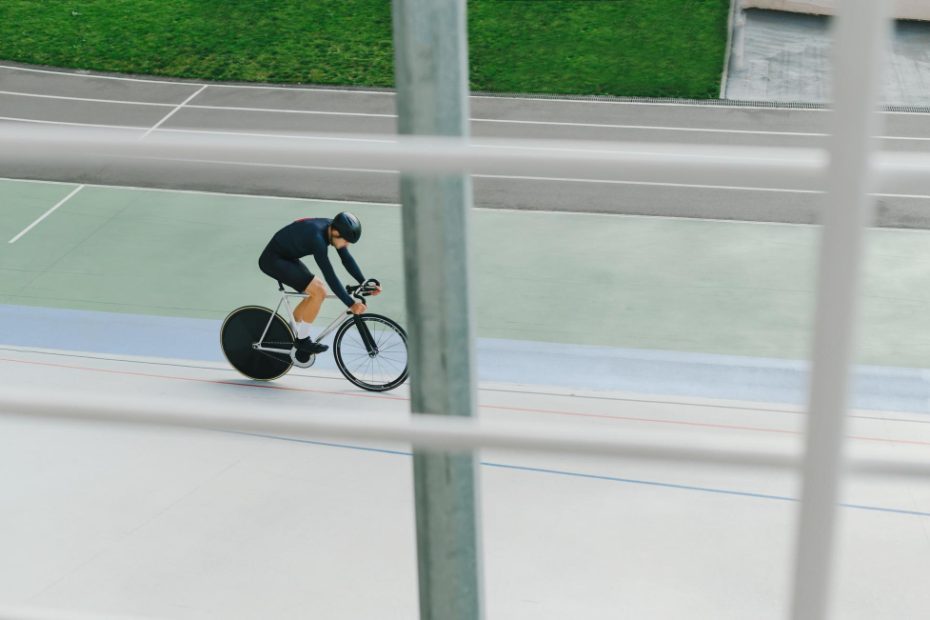How do you strength train for track cycling?
Track cycling is a demanding sport that requires a combination of power, speed, and endurance. To excel in this discipline, athletes must undergo specific strength training exercises that target the muscles used during sprinting and endurance events on the track.
The Importance of Strength Training
Strength training plays a crucial role in track cycling as it helps cyclists generate more power, improve acceleration, and maintain higher speeds throughout races. By building muscular strength and endurance, cyclists can optimize their performance and reduce the risk of injuries.
Targeted Muscle Groups
In order to effectively strength train for track cycling, it’s important to focus on the following muscle groups:
- Legs: The quadriceps, hamstrings, and glutes are the primary muscles responsible for generating power during sprinting and pushing through the pedals.
- Core: A strong core is essential for stabilizing the body and transferring power from the upper body to the legs.
- Upper Body: While not as crucial as the lower body, a strong upper body can aid in maintaining proper form, especially during sprinting events.
Training Approaches
There are various approaches to strength training for track cycling, depending on the specific goals and needs of the athlete. Some common methods include:
- Resistance Training: This involves using weights, resistance bands, or bodyweight exercises to target specific muscle groups. Squats, deadlifts, lunges, and planks are all effective exercises to incorporate into a resistance training program.
- Plyometrics: Plyometric exercises focus on explosive movements to develop power and speed. Box jumps, medicine ball throws, and jump squats are examples of plyometric exercises that can benefit track cyclists.
- Circuit Training: Circuit training combines strength and endurance exercises in a fast-paced workout. It helps improve overall fitness and muscular endurance. For track cycling, circuit training can include a combination of bodyweight exercises, resistance training, and cardio exercises like cycling or running.
“Strength training plays a crucial role in track cycling as it helps cyclists generate more power, improve acceleration, and maintain higher speeds throughout races.”
Periodization and Recovery
To optimize training and avoid overtraining, it’s important to incorporate periodization into a track cyclist’s strength training program. Periodization involves dividing training into specific blocks, focusing on different aspects of strength and endurance throughout the season. It allows for adequate rest and recovery periods to avoid burnout and reduce the risk of injuries.
Nutrition and Hydration
Proper nutrition and hydration are essential for optimal performance and recovery in track cycling. A well-balanced diet that includes a mix of carbohydrates, protein, and healthy fats is crucial for fueling workouts and promoting muscle repair. Staying hydrated before, during, and after training sessions and races is also vital for maintaining performance levels.
In conclusion, strength training is a vital component of track cycling preparation. By targeting specific muscle groups, incorporating various training approaches, and implementing periodization and recovery strategies, track cyclists can enhance their performance, reduce the risk of injuries, and excel in this demanding sport. Remember to consult with a qualified coach or trainer to develop a tailored strength training program that suits your individual needs and goals.
Does Body Weight Affect Cycling Speed?
Cycling is an excellent form of exercise that can help improve cardiovascular health, build strength, and aid in weight management. However, many cyclists wonder if their body weight affects their cycling speed. Let’s explore this topic to understand the relationship between body weight and cycling performance.
The role of body weight
Body weight does play a role in cycling speed, especially when it comes to climbing hills or riding on flat terrain with headwinds. The lighter a cyclist is, the less energy they need to propel themselves forward. This means that cyclists with lower body weights often have an advantage when it comes to speed.
However, it’s essential to note that body weight is just one factor that affects cycling speed. Factors such as fitness level, bike components, aerodynamics, and training techniques also play significant roles. Cyclists should focus on achieving a balance between power and weight to optimize their performance.
The power-to-weight ratio
One way to measure cycling performance is by looking at the power-to-weight ratio (W/kg). This ratio calculates a cyclist’s power output in watts divided by their body weight in kilograms. A higher power-to-weight ratio generally indicates better cycling performance, as it reflects how efficiently a cyclist can generate power while minimizing excess weight.
“A lighter body weight can improve your power-to-weight ratio, but only if you maintain or increase your power output.”
Optimizing performance
To optimize cycling performance, it’s crucial to focus on maintaining a healthy body weight while improving overall fitness. Here are a few tips:
- Strength training: Incorporate strength exercises for the legs, core, and upper body to enhance power and overall performance.
- Balanced nutrition: Follow a well-rounded, balanced diet that provides the necessary fuel for cycling workouts while supporting weight management.
- Interval training: Include high-intensity interval training to build endurance and increase power output.
- Proper bike fit: Ensure your bike is correctly fitted to your body to optimize efficiency and minimize energy waste.
Remember, while body weight does impact cycling speed, it’s important not to obsess over the numbers. Cycling is a sport that welcomes participants of all shapes and sizes. Focus on enjoying the ride, improving your fitness, and challenging yourself rather than solely fixating on body weight.
How do you control breathing when cycling uphill?
Cycling uphill can be a challenging task, requiring not only physical strength but also efficient breathing techniques. Proper control of your breathing can help you maintain stamina, improve performance, and prevent exhaustion. Here are some tips to control your breathing when cycling uphill:
1. Focus on your breath
Concentrate on taking deep, controlled breaths rather than shallow, rapid ones. Inhale deeply through your nose and exhale slowly through your mouth. This allows for better oxygen intake and helps regulate your heart rate.
2. Pace yourself
Avoid going all out at the beginning of the uphill climb. Instead, find a comfortable pace that allows you to maintain steady breathing throughout. Pushing too hard too soon can lead to hyperventilation and fatigue.
3. Maintain good posture
Keeping an upright posture while cycling uphill opens up your chest, allowing for greater lung capacity. Avoid slouching or leaning forward excessively, as it restricts your breathing and makes it harder to take deep breaths.
4. Sync breath with pedal strokes
Coordinate your breathing with your pedal strokes. Inhale deeply as you begin each pedal stroke and exhale as you push down on the pedals. This rhythmic breathing pattern helps optimize your energy expenditure and ensures a steady flow of oxygen.
5. Utilize diaphragmatic breathing
Engage in diaphragmatic breathing, also known as belly breathing. This technique involves expanding your diaphragm and filling your lungs with air by using your abdominal muscles. It enables you to take in more oxygen and release carbon dioxide efficiently, aiding in better endurance.
Remember, controlling your breathing takes practice and patience. Gradually implement these techniques during your uphill cycling sessions and pay attention to how your body responds. With time, you’ll find a rhythm that suits you best, allowing you to conquer uphill climbs with ease.
Quote: “Breathing is the key to conquering challenging inclines on your bike. Focus on steady breath control and find a rhythm that lets you ascend effortlessly.” – Cycling Enthusiast
Why are my legs so weak when cycling?
Cycling is an excellent form of exercise, offering numerous health benefits. However, if you find that your legs feel weak during or after cycling, there could be several reasons for this discomfort.
Poor conditioning
If you’re new to cycling or have been inactive for a while, your leg muscles may not be accustomed to the demands of cycling. Regular physical activity helps build strength and endurance, so gradually increasing your cycling intensity and duration can help improve leg strength over time.
Improper bike fit
A bike that is not properly fitted to your body can lead to inefficient pedaling and added strain on your muscles. Ensure that your bike is adjusted correctly, including the seat height, handlebar position, and pedal alignment. A bike fitting session with a professional may be beneficial if you’re experiencing persistent leg weakness.
Insufficient nutrition and hydration
Proper fueling before and during your cycling sessions is crucial for maintaining energy levels and preventing muscle fatigue. Ensure you’re consuming a balanced diet with enough carbohydrates and staying hydrated throughout your rides. Electrolyte-replenishing drinks can also be helpful in providing necessary minerals.
Overtraining
Overtraining occurs when you push your body beyond its limits without allowing enough time for recovery. Excessive cycling without adequate rest can lead to muscle fatigue and weakness. It’s essential to incorporate rest days into your training schedule and listen to your body’s signals.
“Regular physical activity helps build strength and endurance.”
In addition to these factors, underlying medical conditions such as muscle imbalances, nerve compression, or inadequate blood flow could contribute to weak legs during cycling. If your leg weakness persists despite making adjustments to your training and nutrition, it’s advisable to consult a healthcare professional for a thorough evaluation.



